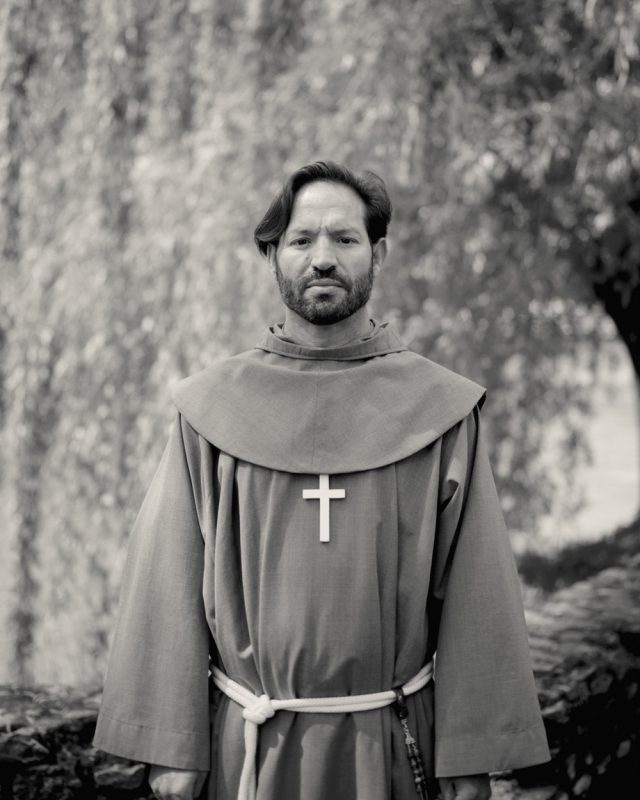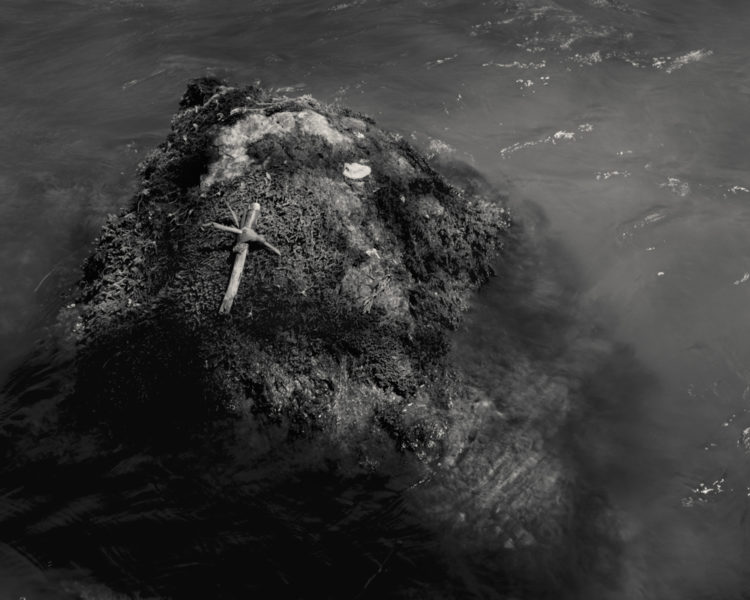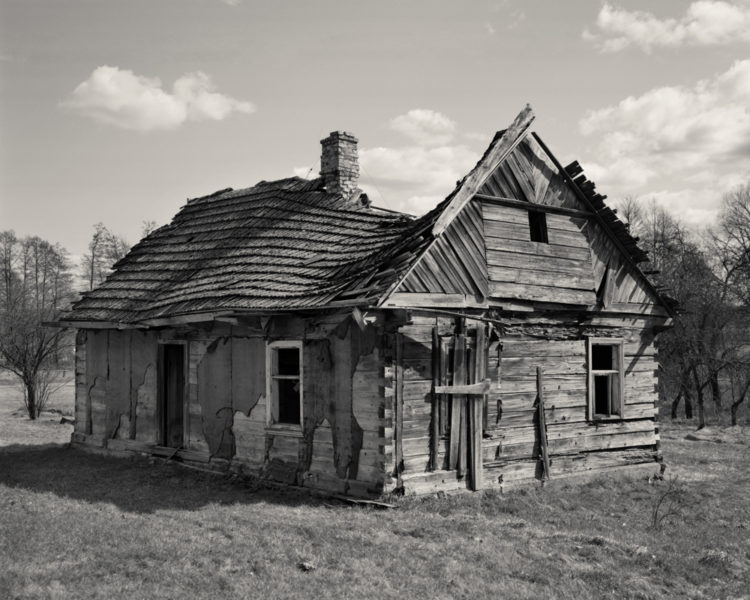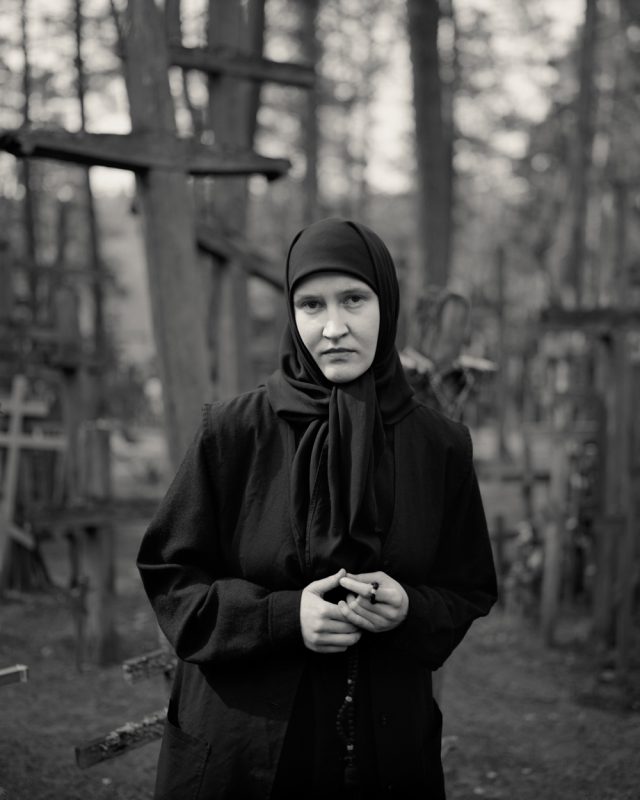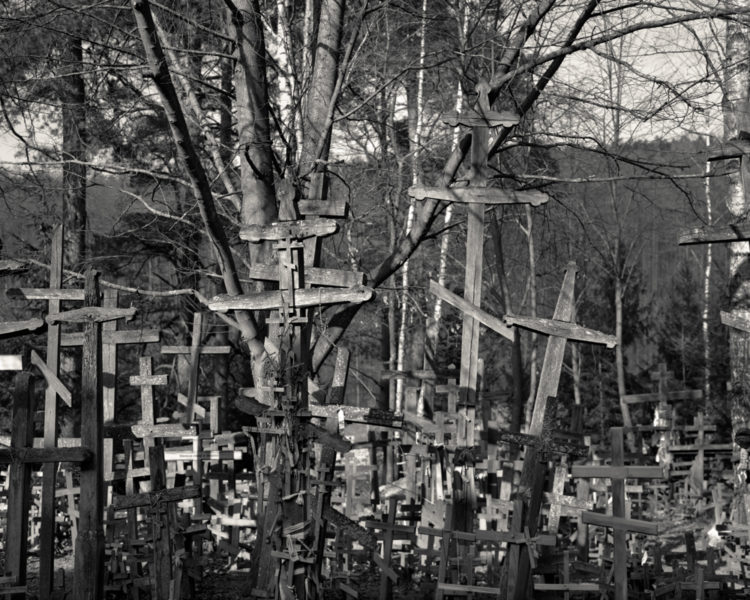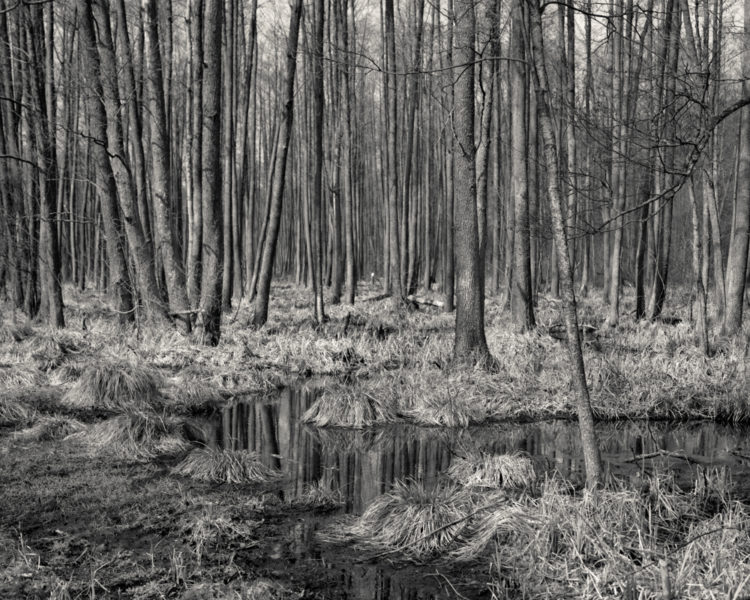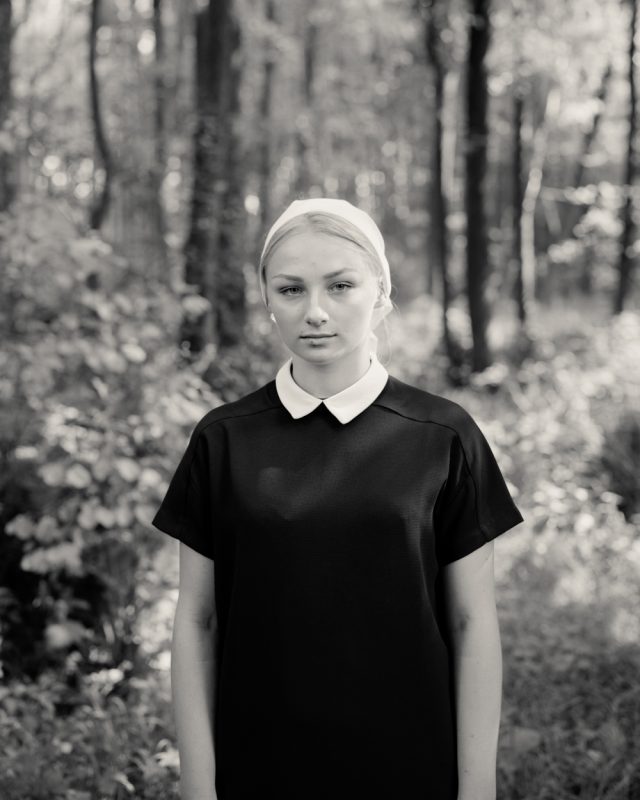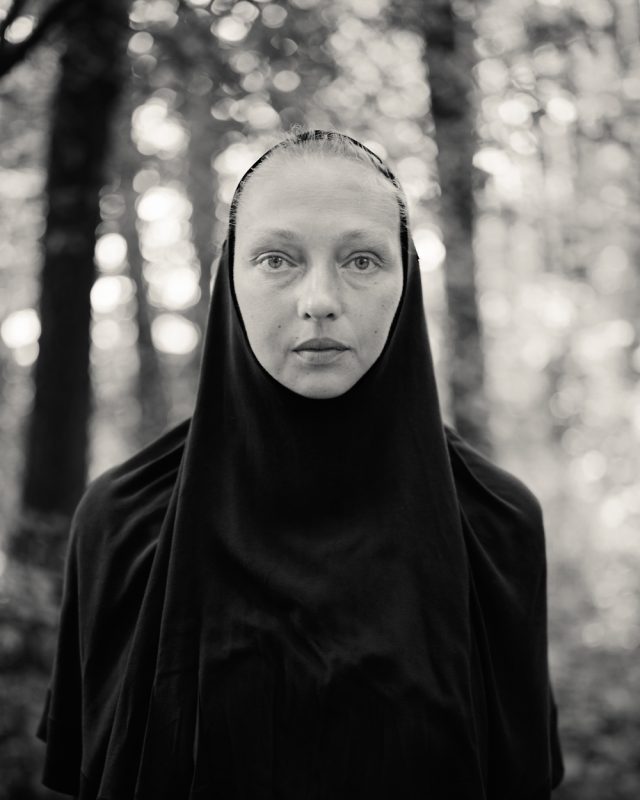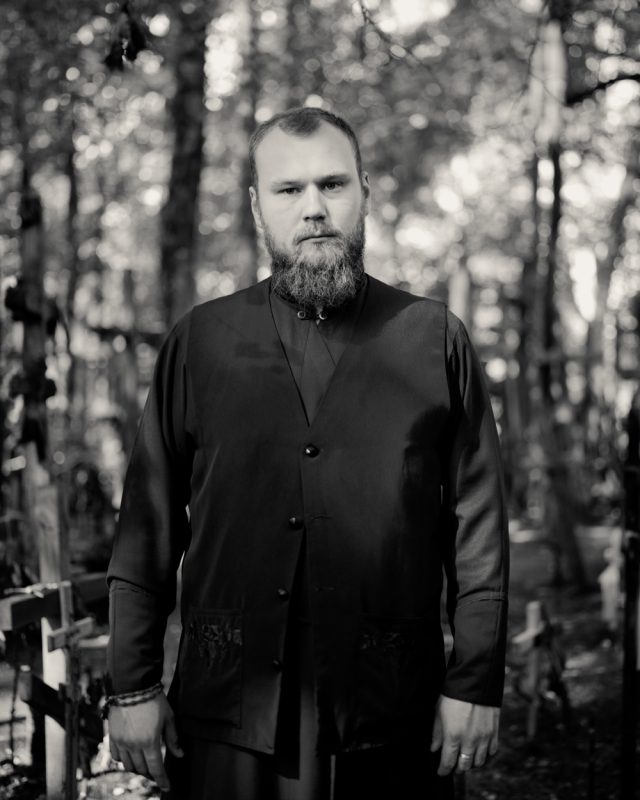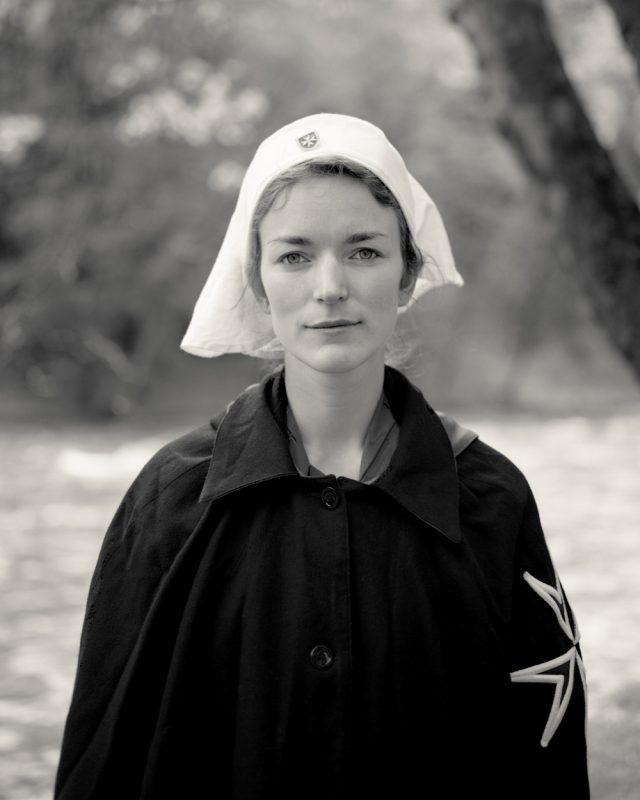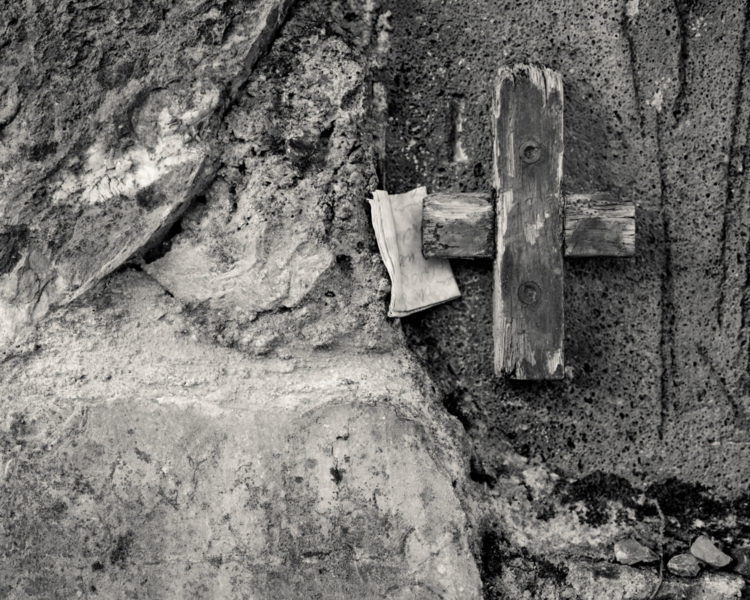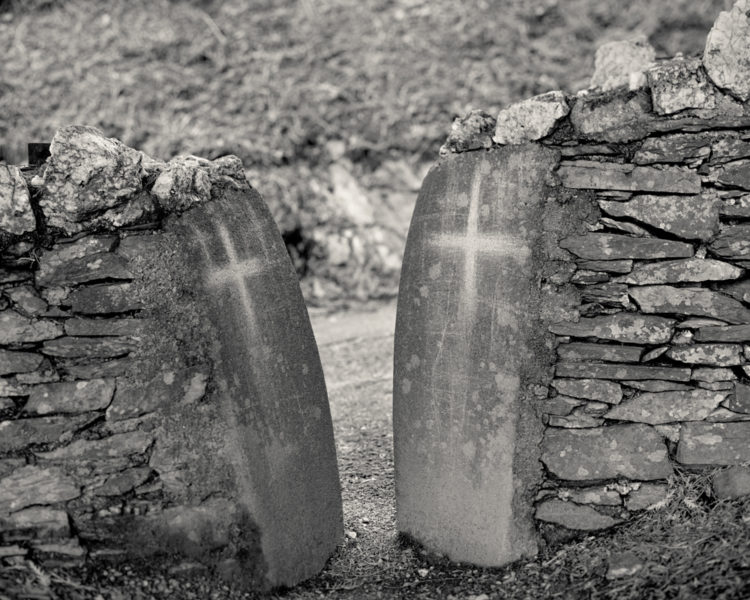Alys Tomlinson
Ex-Voto
Essay by Caroline Molloy
We know a pilgrimage to be a journey of moral or spiritual significance undertaken as an act of religious devotion. British photographer Alys Tomlinson’s latest body of work Ex-Voto examines the practice of pilgrimage via a multi-locational study concurrently looking at three Christian pilgrimage sites; Lourdes in France, Ballyvourney in Ireland and Grabarka in Poland. The series of photographs intentionally avoid the spectacle of the pilgrimage and the objectification of the pilgrim, instead focussing on quieter, reflective moments of contemplation to include formal portraits of the chaperones and professional helpers that support the pilgrims, landscape views of the sites of pilgrimage, and, of course, the sacred ex-voto offerings that are left behind at the pilgrimage site, such as candles, crosses, notes and photographs (the term Ex-Voto is normally associated with the Christian faith).
Tomlinson recognises that there is a contrast between the hustle of the pilgrimage sites and the quiet serenity of her images for she is ultimately interested in the interconnected relationship between the mythical sites and the people that visit them. Through Tomlinson’s enquiry, the two are connected. Her landscapes are ethereal and the ex-voto offerings add a grounding context to the narrative forming a backdrop against which Tomlinson makes her portraits, with each sitter photographed individually with a direct gaze to the camera, and, by extension, us as viewers. An example of this is portrait #Untitled 1 2016-2018. It is impossible not to be enchanted by this face. In this portrait, the participants body and hair are covered, this removes all social and cultural signifiers from the image. Furthermore, the depth of focus of the camera lens is shallow inevitably meaning any background detail to the image falls away, thus isolating and emphasising the subject’s face. The individual is penetrating in her gaze, staring straight into the camera, captivating for the viewer. Indeed, there is an engaging intensity to all of Tomlinson’s portraits, which are reminiscent of the mid-20th century formal black and white portraits of August Sander. Yet these evocative portraits also appear discordant with the hegemonic method of contemporary social documentary portraiture, which is more usually associated with rapidly made environmental digital portraiture. Conversely, Tomlinson’s images are highly considered and do not appear to belong to this time, or at least seem to exist outside of it. Shot on a large format plate camera, with 5×4 inch negatives, the images are slow to create, this ritualistic process of image-making invites an interlude of time, this pause gives the viewer space to reflect on the meditative images.
Five years in the making, this work has taken time to evolve since clearly it is well researched and meticulously conceived. And although Tomlinson claims she is not religious, underpinning her work is an ongoing interest in the architecture of religious artefacts found in places of worship and practices of the sacred. Similarly, this tendency can be found in her earlier bodies of work, Lourdes, a colour documentary project that looks at pilgrims and the social environment of Lourdes, and the commissioned series Lourdes St Marie-Frai, a black and white project that focuses on relationships between the pilgrims, helpers and the church in the famed town in southwestern France. This curiosity is obviously informed too by her MA studies at SOAS, University of London, in the Anthropology of Travel, Tourism and Pilgrimage.
We can understand practices of the sacred to happen outside of the normalcy of everyday life, visible in the liminal spaces of rituals, such as practices of pilgrimage. There is a delicate balance to be realised when documenting such activity and robust arguments for and against depicting these practices from an insider/outsider perspective. Among others, this is highlighted succinctly by Abigail Solomon-Godeau when reflecting about the complex issue of the representation of the other. She writes: “Inside or out, one remains confronted with the ethical and political issues posed by Sontag and Rosler, where it is a question of the representation of the other, where the analysis depends on notions of voyeurism and objectification, tourism or imperialism.”
No doubt informed by her anthropological background, Tomlinson demonstrates great sensitivity in navigating this dilemma. She is reflexive in positioning herself as an outsider to the ritual of pilgrimage, yet engaged as a participant observer. Examining her portraits, it is apparent there is an intimacy which could only have been achieved in dialogue with her portrait participants given these are not images that could be achieved with any sense of speed or flippancy. According to Tomlinson this method of making portraits, slow-portraiture, enables her connect with the people she photographs but not reveal too much about them. Despite the fact that in conversation Tomlinson shares anecdotal information about the portrait participants and the pilgrimage sites, in the exhibition and in the book, the people are unnamed. In addition, the specific landscapes and ex-voto offerings are not located to any one site of pilgrimage. In doing this, connections between the pilgrim helpers and the geography of the natural landscape such as water, stone and forestry can be made. Tomlinson thus offers the viewer a sense of place of pilgrimage without specifically situating each image to open up a discourse with the sacred, one that suggests without describing a specific experience of pilgrimage.
The film that accompanies the Ex-Voto images is a vignette portrayal of Vera, one of Tomlinson’s portrait participants, an orthodox Christian of the Saint Elizabeth Covent in Belarus. It is a compelling observational film, in which Tomlinson gives insight into the rhythms of Vera’s monastic life and its daily tasks such as prayers and caring for and maintaining a stable of horses. The audience is given time to observe the mesmerising sequence of Vera’s modest existence as this lyrical film reveals an unseen world, far away from the bustle of the trappings of contemporary society. The film is due to be premiered at Les Rencontres d’Arles 2019 this July, as part of the Discovery Award in association with London’s HackelBury Fine Art gallery.
One might conclude by referring to one of the key points from Professor John Eade, in his contextual essay published in Ex Voto, wherein he reminds the reader that the experience of pilgrimage extends beyond a religious experience. He suggests it can be felt through a number of material engagements, such as touching a rock face in a grotto, responding to the shock of cold spring water and of course in moments of contemplation. As such Tomlinson’s images respond to this broad notion of pilgrimage and offer an experience of pilgrimage for believers and non-believers alike. ♦
All images courtesy of the artist and HackelBury Fine Art. © Alys Tomlinson.
—
Caroline Molloy is an artist, academic and writer. She holds an MA in Photography from the Royal College of Art and an MA in Visual Anthropology from Goldsmiths. She is a Senior Lecturer in Photography at Coventry University, alongside of which she is PhD candidate at the Centre for Photographic History at Birkbeck, University of London.

